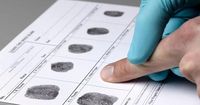Travelers heading to Croatia this fall are in for a surprise at the border—one that has nothing to do with the country’s famed beaches or medieval towns. Beginning October 12, 2025, Croatia will become the first European Union nation to enforce a sweeping new border security measure: the Entry/Exit System, or EES. This high-tech process, set to eventually roll out across the EU, will require all non-EU visitors—including Americans—to be fingerprinted and photographed upon arrival, replacing the familiar passport stamp with a digital, biometric check-in.
According to KMDL-FM, the EES is designed to modernize and streamline border crossings, boosting both security and efficiency. Instead of waiting for a border agent to stamp your passport, travelers will now head to a self-service kiosk. There, they’ll scan their passports, provide four fingerprints, and have a facial photograph taken. The process is straightforward but marks a significant shift in how international visitors are processed at European borders.
TravelOffPath.com and other outlets report that Croatia is leading the way, but the rest of the European Union isn’t far behind. The EES will be mandatory for all EU countries by April 10, 2026, fundamentally changing the entry experience for millions of travelers. The biometric data collected—including fingerprints and facial scans—will be stored for three years. So, if you return to Croatia or any participating EU country during that period, you’ll only need a quick facial scan to breeze through border control. No more repetitive paperwork or waiting for that coveted passport stamp.
The move comes as Croatia experiences a surge in American tourism. In the first half of 2025 alone, roughly 260,000 Americans visited the country—a 16% increase over the same period in 2024, as highlighted by both TravelOffPath.com and Croatia Week. Popular destinations like Dubrovnik, Split, Zagreb, Hvar, and Rovinj continue to draw crowds, thanks to Croatia’s blend of history, natural beauty, and Mediterranean charm.
But what’s driving this biometric overhaul? At its core, the EES aims to bolster security and speed up border crossings. By linking a traveler’s biometric data to their passport, authorities can more reliably verify identities and detect potential threats. As KMDL-FM puts it, “the prints and the passport are together, which makes for a solid form of ID.” The process also promises to make repeat visits far more convenient—after your first entry, subsequent crossings within three years will require only a simple face scan.
Of course, the EES isn’t the only new requirement on the horizon for Americans planning European getaways. Starting in the last quarter of 2026, the European Travel Information and Authorization System (ETIAS) will come into force. This separate online authorization—sometimes compared to the U.S. ESTA—will require travelers from visa-exempt countries (like the United States) to apply for a $7.50 pass before visiting any of about 30 European nations, including France, Germany, and Italy. According to multiple sources, ETIAS is not expected to launch until the EES is fully operational across the EU, ensuring the necessary infrastructure is in place for the new system.
So, what’s the difference between EES and ETIAS? The EES is all about gathering biometric data at the border, replacing the physical passport stamp with digital records. ETIAS, on the other hand, is an online pre-travel authorization. Before boarding a flight to Europe, travelers will need to complete an online application, pay the fee, and receive approval—similar to the process for entering the United States under ESTA. As The Express notes, “the ETIAS infrastructure cannot be put into practice until the EES system is working.” In other words, the two systems are separate but interconnected, forming a new digital barrier for those seeking to explore Europe.
For now, Croatia is at the forefront. If you plan to visit after October 12, 2025, expect to be directed to one of the new EES kiosks. The process, described by The Express as “mostly straightforward,” involves scanning your passport, providing fingerprints and a photo, and answering a few questions on the screen. For subsequent trips within three years, you’ll only need a facial scan—making return visits much simpler.
Travelers should also be aware that these changes are part of a broader trend toward digital border security worldwide. The United Kingdom, for example, has recently introduced its own Electronic Travel Authorization (ETA) requirement. As KMDL-FM wryly observes, “If you ask me, it looks like a money grab because they’re collecting the same data that’s on your passport and connected with any previous visas you might have been assigned. But, you have to have it if you want to experience the Sloppy Giuseppe from Pizza Express or the to-die-for fish and chips they serve at Hobson’s.”
It’s not just about bureaucracy—these new systems are meant to address evolving security challenges and keep pace with technological advancements. While the process may seem daunting at first, officials insist that the changes will ultimately make travel safer and more efficient. The U.S. State Department currently rates Croatia as Level 1: Exercise Normal Precautions, the lowest-level advisory, reflecting the country’s reputation as a safe and welcoming destination.
For Americans and other non-EU travelers, the key takeaway is simple: be prepared. Read up on the latest entry requirements for your destination, and don’t assume that yesterday’s rules will still apply tomorrow. As KMDL-FM cautions, “It’s always a good idea to read up on the latest changes in security and immigration procedures in any destination you have travel plans for. They often change quickly and with very little fanfare, so it’s up to you to do your homework.”
In the end, while the new fingerprinting and photo requirements might seem like a hassle, they’re part of a broader push to modernize travel and keep everyone safe. The days of the border agent’s ink stamp may be numbered, but the promise of faster, smoother, and more secure journeys lies ahead—assuming you’re ready to smile for the camera and press your fingertips to the scanner.





